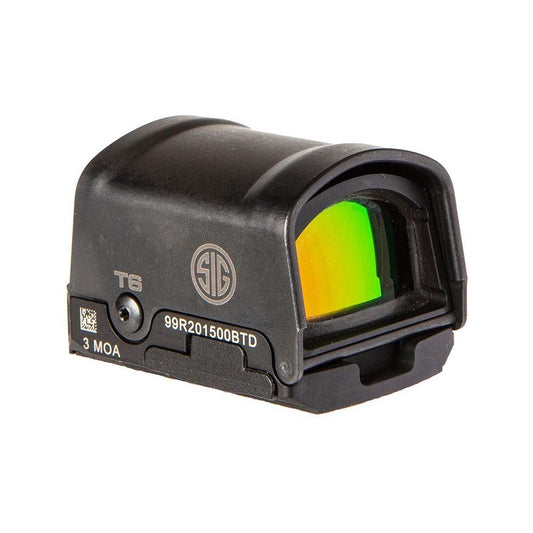

Sig Sauer Romeo2 1x30mm Red Dot Sight offers a robust platform for rapid target acquisition in diverse conditions. Built with a 3 MOA or 6 MOA red dot and featuring 15 brightness settings, this sight ensures quick engagement regardless of lighting. The high-efficiency LED emitter combined with a molded aspheric glass lens provides superior brightness and light transmittance while eliminating distortion. Its durable 7075 aluminum housing and rugged steel shrouds make the Romeo2 resilient against impacts and drops, ensuring reliable performance in the field.
With a remarkable battery life of 25,000 hours, the Romeo2 incorporates MOTAC technology, which automatically activates the sight upon movement and powers it down when still, conserving energy. It is compatible with all SIG pistols featuring the PRO-CUT slide, making it an adaptable choice for various setups. The spring-loaded side battery tray allows for easy battery changes without tools, ensuring that you stay focused on your target.
Features:
- HIGH VISIBILITY with a 3 MOA or 6 MOA red dot for precise aiming in all lighting conditions.
- 15 BRIGHTNESS SETTINGS to adapt to various environments, enhancing target acquisition speed.
- SUPERIOR LIGHT TRANSMITTANCE from the molded aspheric glass lens, ensuring clarity and minimal distortion.
- RUGGED CONSTRUCTION with 7075 aluminum housing and steel shrouds for maximum durability against impacts.
- LONG BATTERY LIFE of up to 25,000 hours, minimizing the need for frequent replacements.
- MOTAC SYSTEM automatically turns the sight on and off based on movement, optimizing battery usage.
- EASY BATTERY ACCESS via a spring-loaded side tray, allowing for quick changes without tools.
- COMPATIBLE with SIG PRO-CUT slides, offering versatility across a range of SIG pistols.
Technical Specifications Table
| Specification | Details |
|---|---|
| Magnification | 1x |
| Objective Lens Diameter | 30mm |
| Battery Life | Up to 25,000 hours |
| Housing Material | 7075 Aluminum |
| Weight | Lightweight design for optimal handling |
| Reticle Type | 3 MOA or 6 MOA Red Dot |
| Brightness Settings | 15 settings |
| Compatibility | All SIG Pistols with PRO-CUT slide |
What's in the Box?
- Sig Sauer Romeo2 Red Dot Sight
- 2 Steel Shrouds
- Battery
- User Manual
Customer Reviews
"The Romeo2 is incredibly easy to use and holds zero perfectly. It has improved my accuracy significantly!"
"Great sight for the price! Lightweight, durable, and the battery life is impressive."
"I love how quickly the MOTAC feature activates. It's exactly what I needed for quick target practice."
FAQ
One common concern is about the performance of the Romeo2 in low-light conditions. The molded aspheric lens and 15 brightness settings ensure that users can adjust the reticle to suit varying light levels, making it effective for night shooting as well.
Another question often arises regarding the maintenance of the sight. The durable construction minimizes wear and tear, but it's recommended to clean the lens with a microfiber cloth to maintain optimal clarity. As for comparisons, many users note that the Romeo2 offers comparable quality to higher-priced models, particularly in terms of battery life and versatility.
Similar Models
If you're exploring options, consider checking out the Sig Sauer Romeo1 for a compact design or the Romeo3 for advanced features. Each model offers unique benefits tailored to different shooting preferences. Explore our complete collection to find the right optometric solution for your needs.
You May Also Like
Here’s some of our most similar products people are buying. Click to discover trending style.






